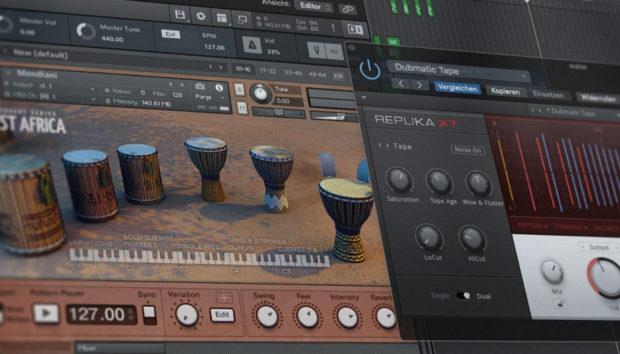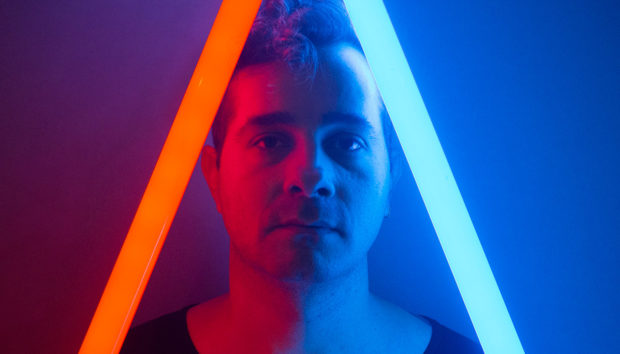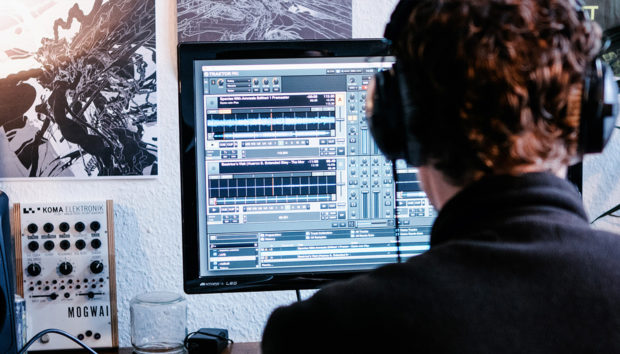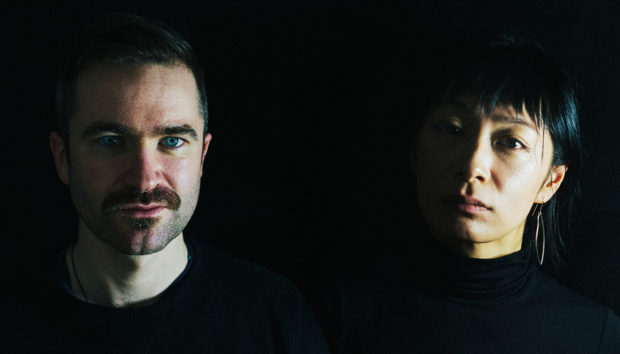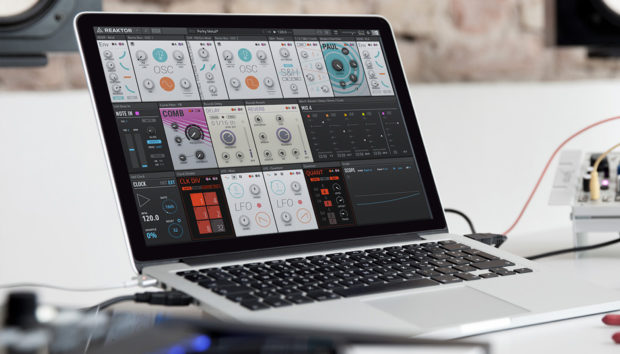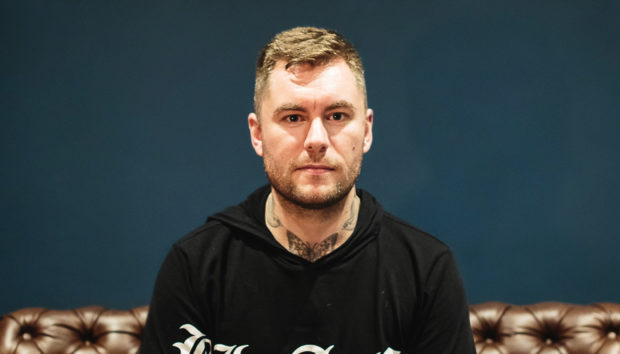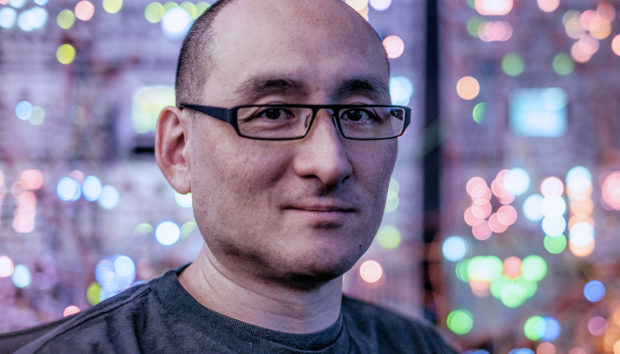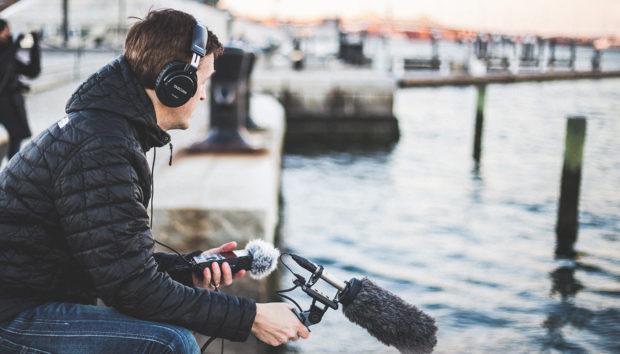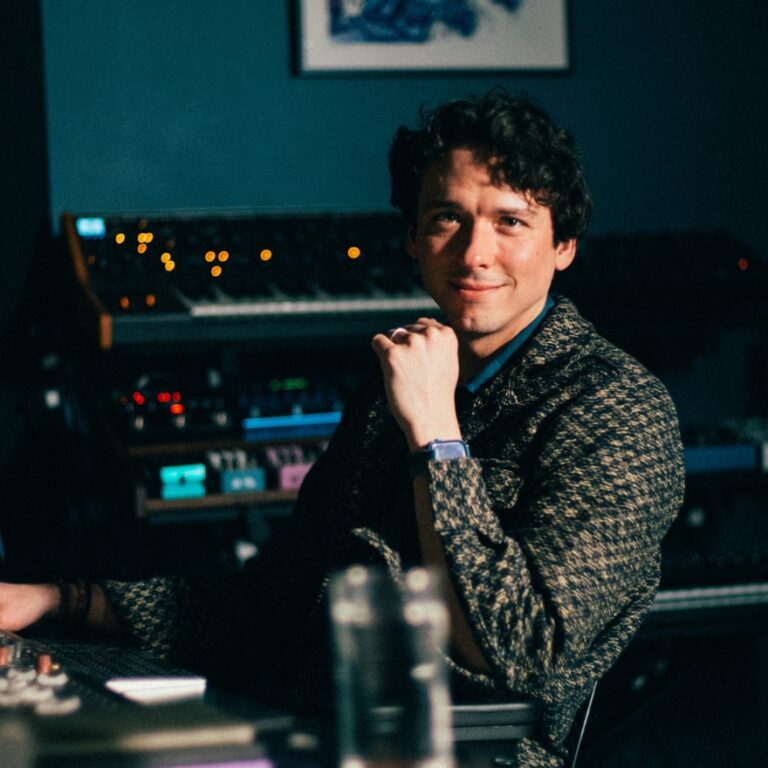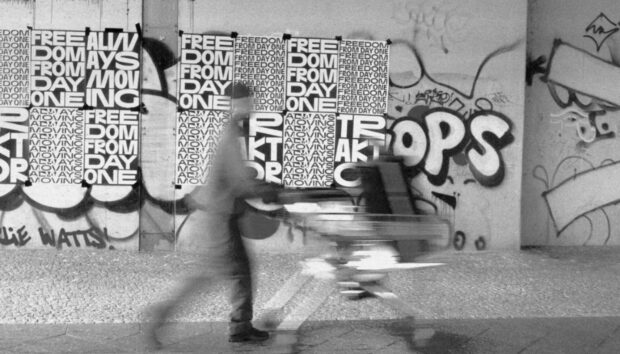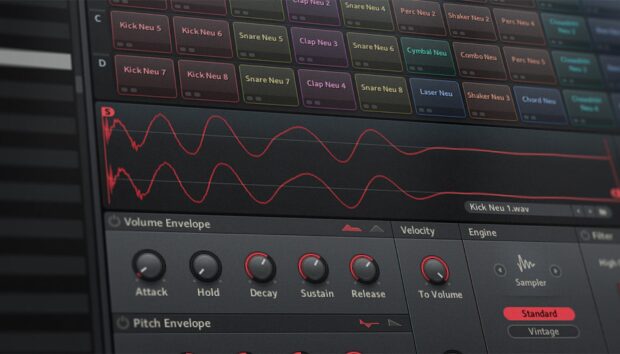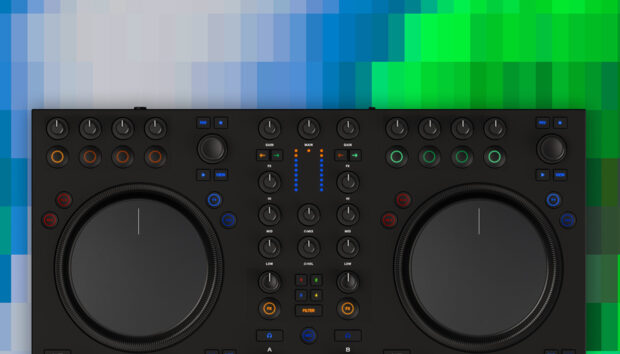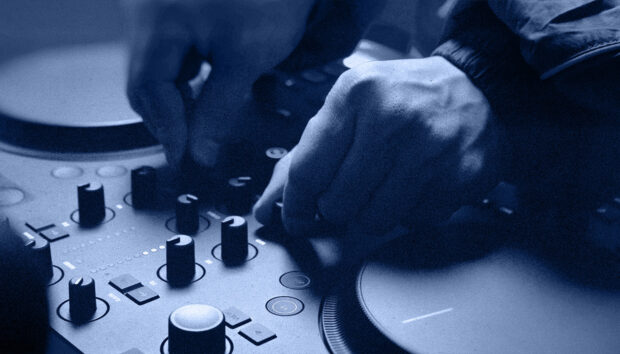Night Breeze doesn’t ever overcomplicate things. His new single “Wanaka Springs” works because it trusts the groove, strips everything else back, and builds from instinct. The track is light on frills but heavy where it counts, the kick and bass lock in early and leave plenty of space for melodies to drift without clutter.
That balance is no accident.
Before diving into electronic production, Night Breeze played guitar in a rock band, and that flexible and jam-inspired (yet still linear) thinking is evident in his writing style. There’s chord movement, not just loops. The structure feels played, not assembled. His production references range from Bob Moses to Radiohead, but what makes it work is how unforced it all feels. Nothing is trying to grab your attention – yet it does.
Jump to these sections:
- Setting up MIDI routing in Maschine for multiple hardware synths
- Writing full patterns vs. loops inside the Maschine environment
- How to move from jams into full arrangements
- Keeping inspiration flowing without a screen
- Tips for using Maschine+ as a hub in a hardware setup
In this interview, he breaks down how Maschine+ fits into his hybrid workflow, how hardware MIDI routing helps him write faster, and why writing without a computer can actually make things easier.
Plus, Night Breeze has generously shared a Maschine+ kit from his “Wanaka Springs” single for you to experiment with in your music. Get it for free below!
How do you set up Maschine to send MIDI to multiple synths while keeping everything manageable?
The way I’ve set this up is that each of my hardware synths is assigned to a sound in Maschine. The routing within Maschine is relatively simple if everything is set up properly, including MIDI cables and channels.
I have a MIDI interface that I connect Maschine and my synths to. However, if all your synths have a Thru port, you can get by just using those. The interface provides me with a little more flexibility, as you can easily enable or disable connections when needed and save different presets for various use cases.
For example, I sometimes like to use my Prophet Rev2 to control my other synths, as it has the largest keybed and is at the most comfortable playing height (plus I have a desktop synth, the Novation Peak, which doesn’t have any keys).
The presets give me an easy way to switch back and forth between this use case without needing to change any other synth or Maschine routing.
But whichever method you use, after connecting all your equipment with MIDI cables, the next essential task is to put each synth on its own MIDI channel. This ensures you can control which messages are being sent to which synths. Since 1 is the default channel, I like to leave that one open and put my synths on 2, 3, 4, etc. You can do this in the settings menus for most synths quite easily.
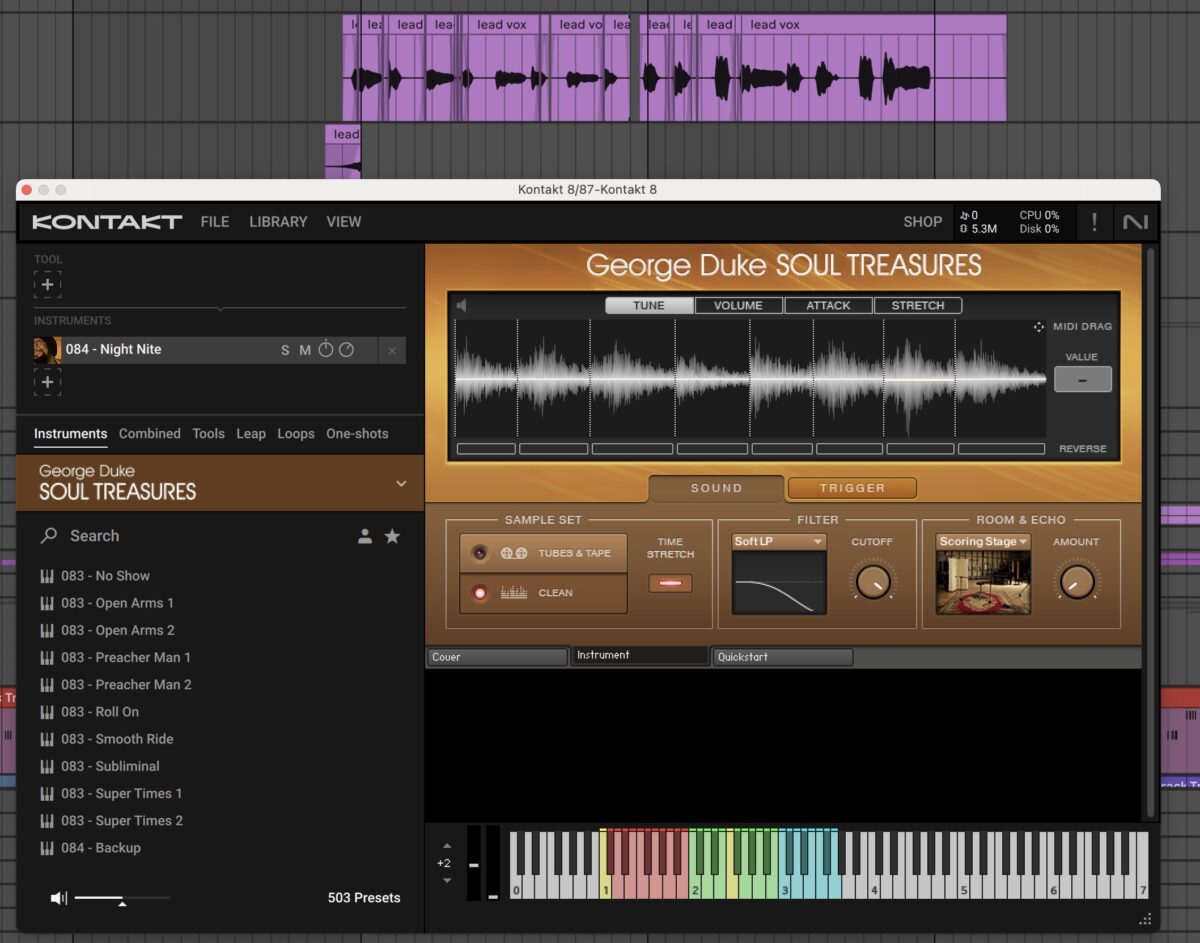
Once you have everything connected with MIDI cables and on their own MIDI channels, you then go to a Sound, hit the ‘Channel’ button, go to Output -> MIDI and set the channel to match the appropriate synth. Once you’ve done that, you should be able to play the pads on Maschine and have them play notes on the hardware synth, exactly the same as it would work with a soft synth loaded inside Maschine.
This allows you to sequence parts or play them in on the pads. However, if you’re like me, you also want the ability to play MIDI notes on a keyboard while Maschine is recording. I find the easiest way to do this is to use a separate MIDI keyboard – I’ve got the Komplete Kontrol S88 on my desk, and when I have that in MIDI mode sending notes to Maschine, whatever I play will control the active sound in Maschine.
I love this workflow for songwriting, because it’s a very quick way for me to sketch out new ideas without a computer (since I have the Maschine+).

I’m not opposed to the computer or anything – I finish all my tracks in Ableton – but for one, I often simply find it faster to build out initial ideas on Maschine. It’s so easy to quickly sequence in rhythms and record in parts as everything keeps looping.
And two, I can often find it easier to get and stay in the creative flow when I’m not staring at a computer screen and a DAW with limitless options. I’ve got my Maschine template ready to go with some favorite drum sounds and my trusty hardware synths hooked up, so I can get straight to building up an idea and not get bogged down flicking through drum sounds or synth presets.
Pro tip from Night Breeze: The most important thing as an artist is to stay persistent and consistently finish tracks, as that’s how you’ll continuously improve and refine your style. Being able to just turn on Maschine+ and some synths and start jamming is an effective and inspiring way to immediately get to building out an idea and losing yourself in the creative flow.
Do you build full song sections inside Maschine while jamming, or do you stick to loops and patterns until something clicks?
I have built out full song sections before, but typically, I just stick to loops and patterns in Maschine. I’ll usually make a handful of patterns for a given part, then go back through those and pick my favorite.
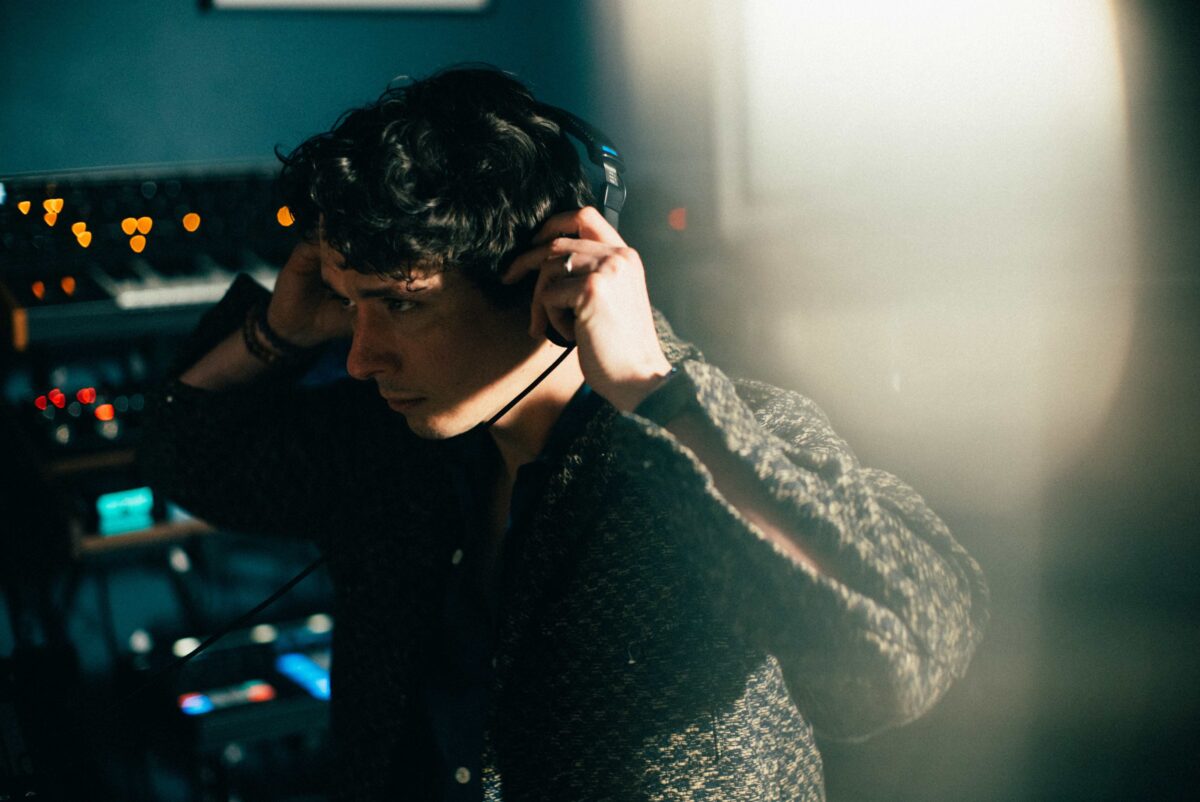
Once I’ve settled on my favorite core patterns for each part, I’ll typically move things over to Ableton to build out the arrangement.
I’ve got four hardware synths, so my standard structure for a sketch is a bass part, some sort of pluck or chord synth, a more melodic lead element, and then a pad filling out some space and the harmonies.
Pro tip from Night Breeze: A great way to create a cohesive sound in your work is to cultivate a palette of drum samples and synth sounds you like and then make those the first sounds you reach for when creating a new track. Maschine is perfect for this, as you can build yourself a template with a selection of favorite drum and synth sounds ready to go and then use those quickly and easily
Do you find yourself recording long jams and then editing them later, or do you try to write full arrangements in real time?
I definitely lose myself at times jamming out to songs on Maschine – once you’ve got the core parts all looping, it’s really fun to jam live and modulate the intensity. But typically once I’ve got my core idea working well and I’m ready to progress the track forward, I’ll transfer things over to Ableton to build the arrangement.
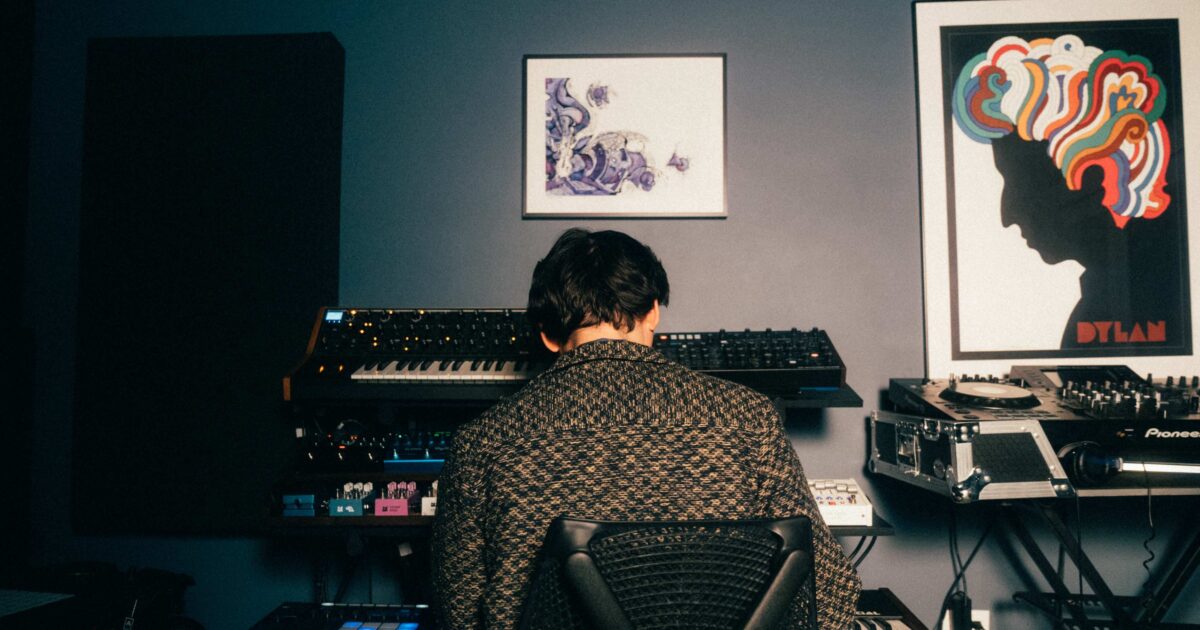
I think this part – moving things from Maschine over to a DAW – can sometimes scare people, but my workflow works pretty well for me. I save the project in Standalone mode, then open it up within the Maschine plugin in Ableton. Then you can easily drag the MIDI or audio for each part over to an Ableton track. I have my synths set up in Ableton already, so once I drag the MIDI to the appropriate track and hit play, it will sound the same.
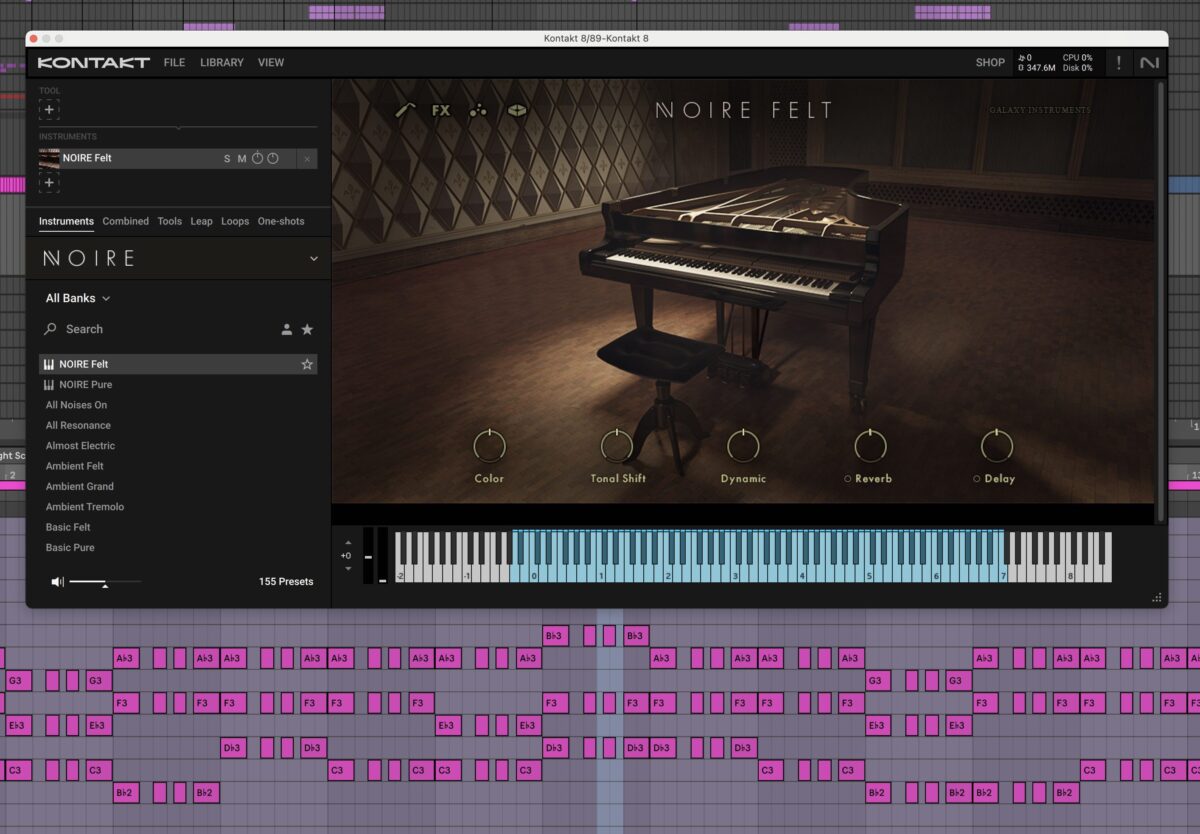
For drums, I may drag in audio or MIDI depending on the parts and how much I think I’ll want to change them.
Pro tip from Night Breeze: Try to say as much as you can with as few elements as possible. Tracks are almost always stronger when you express the core idea as simply and directly as possible. A Maschine+ driven hardware setup can be great for this, as if you only have a limited number of synths and sounds that you’re using, you’re forced to make the most of each part.
After a jam session, what’s your process for turning it into a real track? Do you keep it all in Maschine, or move to a DAW?
My jam session is more for coming up with ideas and building out the core drum and synth parts, vs making a full arrangement.
Usually, I end up with a 16 or 32 bar loop in Maschine before I move over to the DAW using the process I mentioned above.
Pro tip from Night Breeze: Perfectionism is often the biggest obstacle to finishing songs, but there’s no such thing as ‘perfect’ when it comes to art. People connect with a song based on the vibe and emotion in the track, not some mythical ideal of technical perfection that doesn’t exist. Living outside of the box, even if only for part of the process, can make it easier to just get in the zone and detach from our natural tendency to get overly fixated on minor details.
You mentioned Maschine helps you avoid getting stuck in the computer – why is that important for you?
I use the computer plenty, too, so it’s nice just to get away from it sometimes. The computer and DAWs are excellent creative tools that enable all kinds of sonic exploration, but we also spend so much time looking at screens in our lives that it can be very creatively refreshing and inspiring to jam out ideas without looking at a computer.
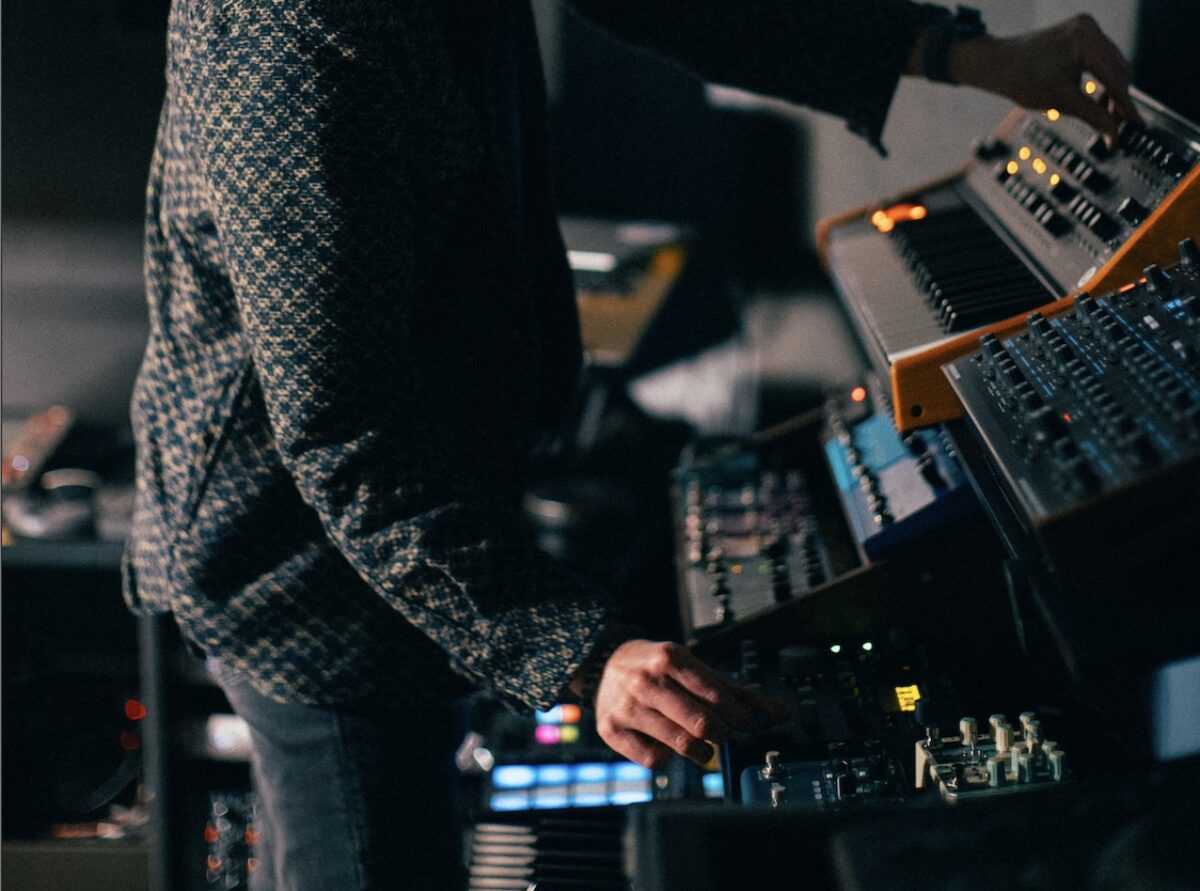
Another aspect is the speed of generating initial ideas – I can sequence, record, and loop parts very easily in Maschine, which allows me to build up the basic idea of a track faster. This often makes it easier to get into that glorious zone of creative flow we all seek.
Having a limited set of tools is another part of this – when using the computer, we have an overwhelming amount of plugins and samples to choose from. If I limit myself to the sounds in my Maschine template and the small selection of hardware synths I have, I can immediately start creating and chase the spark of a new idea, rather than getting lost in an overwhelming number of options.
I’m by no means an analog purist, and use plenty of soft synths in my final productions, but sometimes being all in the computer can distance us from the fact that we’re making music meant to be felt in our bodies in the physical world.
Maybe it’s my history as a guitarist, but there’s something that satisfies the soul about playing around with a real instrument. It’s simply very creatively satisfying and inspiring to jam around, smash pads, play melodies, and twist knobs without a computer in sight.
Pro tip from Night Breeze: It’s beneficial to split the creative process into two parts – one part where you’re just playing around, brainstorming and creating new ideas without judgment, and another part where you’re being more analytical and making decisions about the ideas you’ve come up with. A Maschine+ – driven hardware setup is amazing for the open-ended brainstorming side of the process, as it makes it incredibly easy just to get lost and absorbed in the music.
If you could give one piece of advice to someone trying to set up Maschine as the center of a hardware-based writing setup, what would it be?
If you don’t know how to use Maschine really well, I’d definitely spend some dedicated time learning the software and workflow.
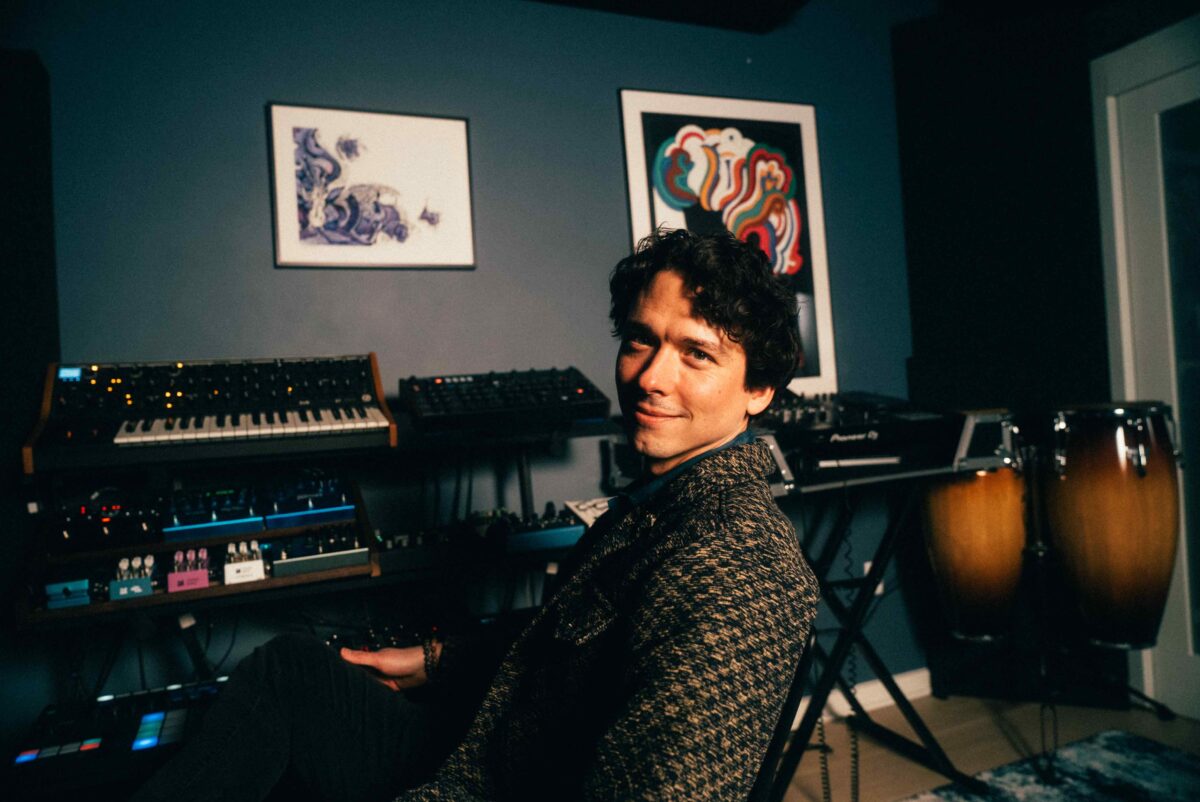
Native Instruments offers excellent guides and documentation on their website, and I’m sure there are numerous valuable YouTube resources available for learning as well. It can be a bit daunting at first, but once you understand the workflow’s foundations, it’s a remarkably powerful system.
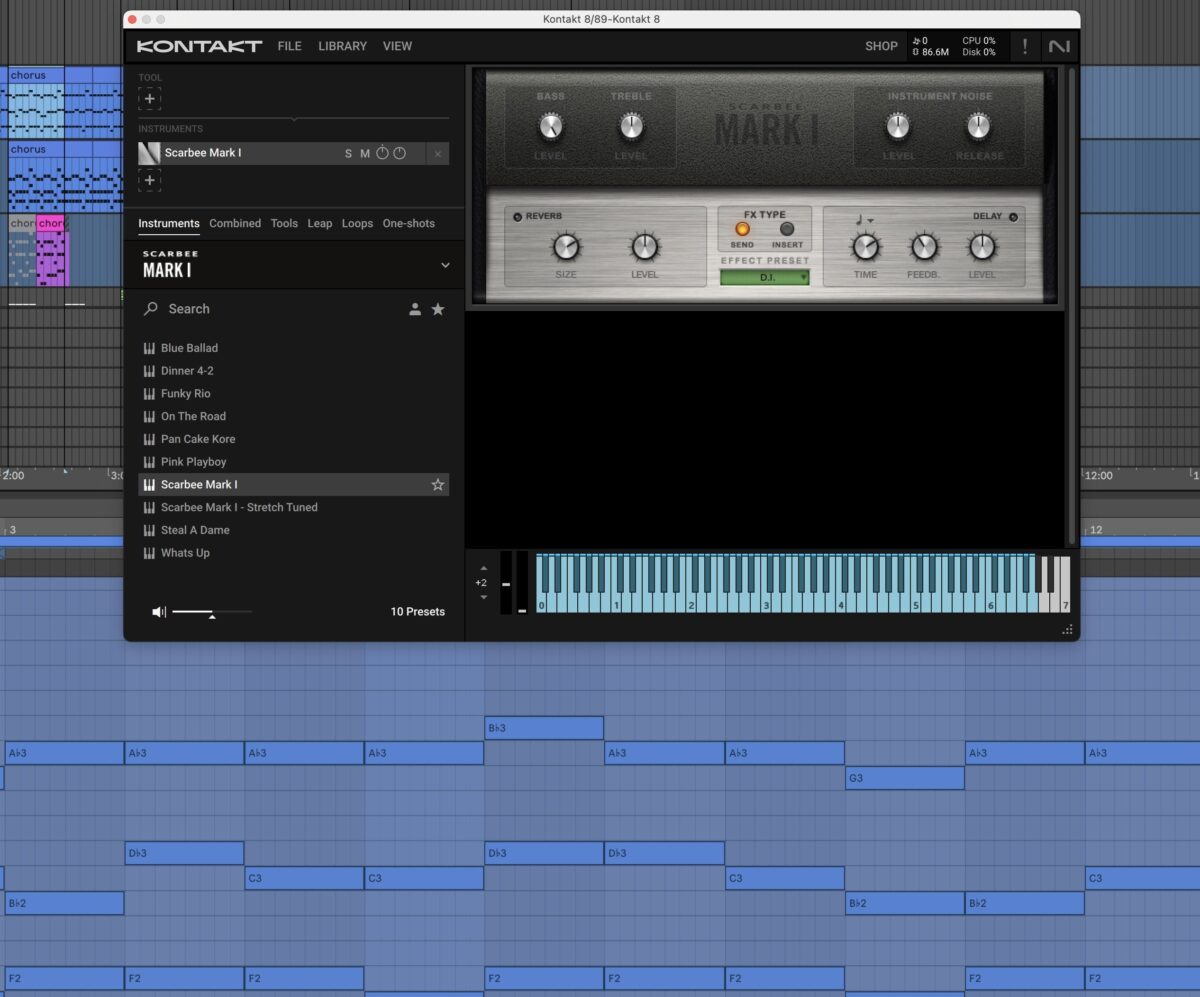
And then of course, it always helps to start small.
Start by adding just a single hardware synth into your workflow before going too crazy. With a simple setup, you don’t need to worry about something like a MIDI interface, which adds complexity that you might as well put off dealing with until you actually need it for a specific reason.
Start using tools like Maschine to bring ideas to life
Big thanks to Night Breeze for walking us through his setup and sharing what makes his process tick. Across everything he said – from jamming with hardware to avoiding screen fatigue – the throughline is clear: simplify your tools so you can move fast and stay creative.
Maschine+ defines the entire setup for Night Breeze, and it’s the reason he’s able to get ideas down without breaking flow.
When the tools are in place and you know them like the back of your hand, it’s easier to commit to ideas and focus on finishing music. Learn more about how Maschine+ can support your workflow at the link below.
